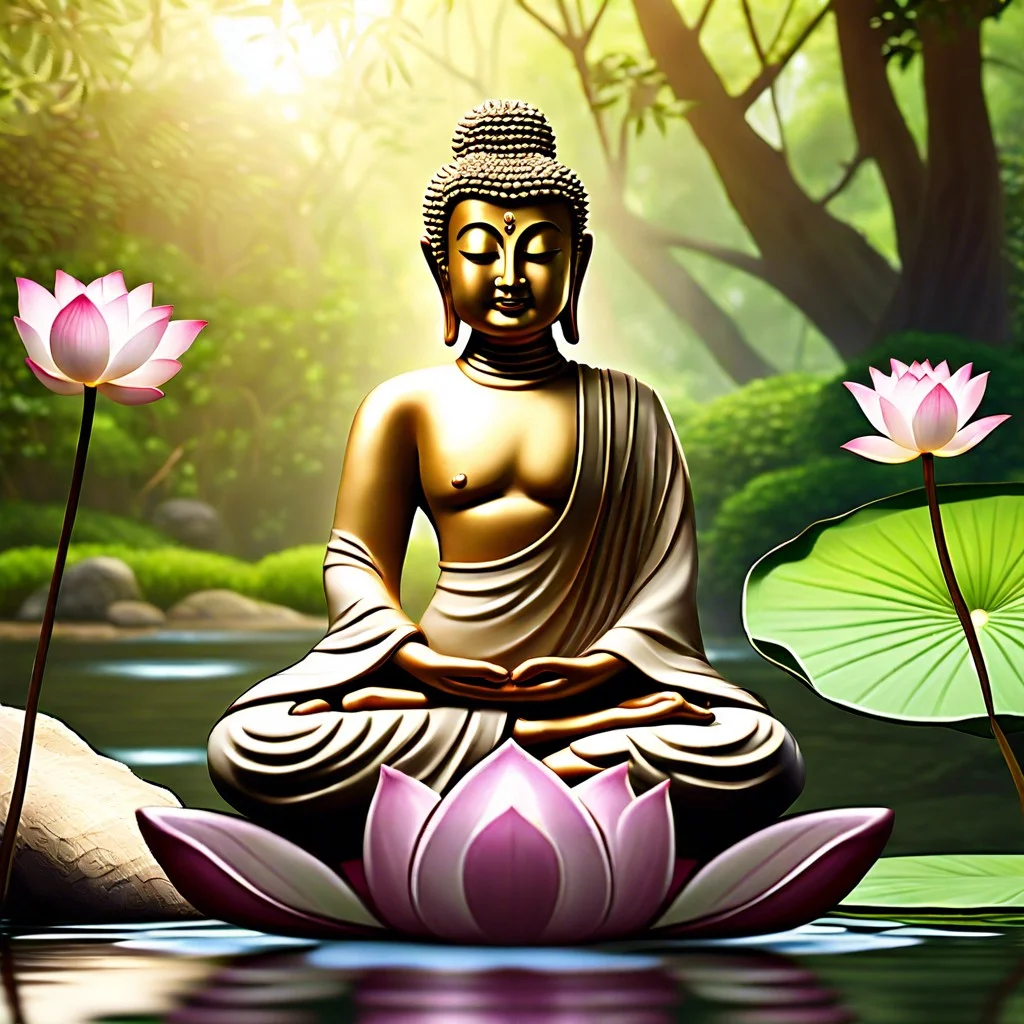This article illuminates the reasons why Buddhas engage in meditation, shedding light on its significance in their spiritual practice.
Key takeaways:
- Meditation trains the mind and increases awareness.
- Enlightenment is achieved through dedicated meditation practice.
- Mindfulness sharpens focus on the present moment.
- Concentration leads to calmness and clarity.
- Vipassana meditation fosters insight, wisdom, and equanimity.
Core Reasons for Buddhist Meditation

At its foundation, Buddhist meditation serves a dual purpose: training the mind and unlocking greater awareness. Like fine-tuning an instrument, practitioners aim to harmonize their mental faculties to perceive the intrinsic nature of reality. Silence and stillness are the fertile ground where clarity can blossom. Buddhists see meditation as an essential tool to chip away at the persistent illusions that daily life casts, which often cloud judgment and lead to suffering.
Beyond this, cultivating self-discipline and focus through regular meditation practice helps to establish a sense of inner peace. This tranquility isn’t just for the solitary moments on the cushion; it spills over into the everyday hustle, enabling a measured and compassionate response to life’s rollercoaster ride.
Equally important is meditation’s role in nurturing positive states of mind, such as loving-kindness and equanimity. Like nurturing seedlings in a garden, consistent care through meditation likens to fertile soil for these qualities to grow, eventually bearing the fruit of profound connection with others and equilibrated engagement with the world.
Meditation’s profound role in the Buddhist tradition serves to pierce through the veil of mundane existence, inviting a profound transformation that is as practical as it is profound, enhancing both individual peace and collective harmony.
Attainment of Enlightenment
Enlightenment, or reaching a state of Nirvana, sits at the pinnacle of Buddhist practice. The journey there is less of a sprint, more of a marathon—a blend of dedication, wisdom, and inner tranquility. Picture a lotus flower unfurling its petals; that’s the unfolding of enlightenment.
Consider this: enlightenment in Buddhism goes beyond intellectual understanding. It’s like biting into a ripe peach—you know its sweetness through direct experience, not from reading a peach enthusiast’s blog. Meditation serves as the pathway to this direct, unfiltered knowledge. By stilling the ripples of a busy mind, practitioners come bike-to-face with the true nature of reality, unhindered by distractions or illusions.
This quest for truth requires deep personal commitment. Like a gardener patiently nurturing a seed, a meditator cultivates qualities such as ethical conduct and patience. Each moment of awareness, every breath, is a step on the ladder leading to that light-filled room of enlightenment. And once there, wisdom shines bright, untarnished by the shadows of ignorance.
While ultimate enlightenment might seem like a hefty goal for Sunday afternoon meditation, each session chips away at the wall between our bustling minds and the profound peace that enlightenment promises. It’s a peace not just felt within but radiates outward, impacting all those we encounter. After all, a single candle can light an entire room.
Cultivation of Mindfulness (Sati/smrti)
Mindfulness is like a mental magnifying glass, sharpening focus on the present moment. This practice draws from an age-old tradition that emphasizes awareness of thoughts, emotions, and sensations without judgment. Think of it as mental calisthenics, strengthening the mind’s ability to remain anchored in the now, amidst life’s ebb and flow.
Through regular meditation, practitioners learn to observe their mental chatter from a distance. This detachment is like unplugging from the constant noise of a busy street—suddenly, you’re able to hear yourself think. As the mind becomes more attuned to the moment, clarity and calmness follow suit, leading to an increased sense of well-being.
Buddhists often use the analogy of the sky and clouds to describe mindfulness; thoughts are the clouds passing through the vast, clear expanse of the mind. By cultivating this skill, individuals better navigate emotional turbulence, akin to a ship steadying itself amidst waves, ensuring a smoother sail through life’s challenges.
Developing Concentration (Samatha)
Diving deeper into the still waters of the mind, Buddhists use concentration practices as a foundation for calm and clarity. Imagine the mind as a lake; when turbulent, it distorts reflections. Meditation stills the surface, allowing a clear view to the depths below.
Concentration—often visualized as a steady candle flame undisturbed by the winds of distraction—sets the stage for profound insight. Through techniques like focusing on the breath or a mantra, the mind hones its ability to remain present. The chatter of thoughts quiets down, and a sense of peace pervades.
This practiced focus is more than just a training ground for steadiness; it is a gateway to accessing the deeper zones of meditation. With each in-breath and out-breath, distractions dissolve, patience grows, and meditators find themselves in a state of serenity, poised for the next leap into insight.
Insight and Wisdom Through Meditation (Vipassana)
Peeling back the layers of our consciousness through Vipassana meditation is akin to a deep sea dive into the mind. This practice sharpens wisdom by offering a clear lens to observe thoughts and sensations without attachment or judgment. Imagine sitting by a river, watching debris flow by – Vipassana trains us to observe the mental debris without getting swept away.
Through regular practice, subtle but profound insights begin to surface. You might discover the impermanent nature of thoughts, or the interconnectedness of your inner experiences with the world outside. It’s like flipping on a light in a room long left dark, revealing corners and contours previously unnoticed.
Moreover, Vipassana fosters equanimity. As you learn to sit with both the comfortable and uncomfortable without craving or aversion, a balanced mind emerges. It’s as if you’re developing an internal compass that helps you navigate life’s ebbs and flows with grace and wisdom.
In essence, Vipassana is the art of seeing things as they truly are, unhindered by the fog of preconceptions. Each mindful breath taken is a step on the path to profound understanding—a journey not for the faint of heart, but certainly for the earnest spirit.